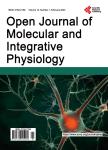The acute and chronic effect of low temperature on survival, heart rate and neural function in crayfish (<i>Procambarus clarkii</i>) and prawn (<i>Macrobrachium rosenbergii</i>) species
The acute and chronic effect of low temperature on survival, heart rate and neural function in crayfish (<i>Procambarus clarkii</i>) and prawn (<i>Macrobrachium rosenbergii</i>) species作者机构:Department of Biology University of Kentucky Lexington USA
出 版 物:《Open Journal of Molecular and Integrative Physiology》 (分子和综合生理学期刊(英文))
年 卷 期:2012年第2卷第3期
页 面:75-86页
学科分类:1002[医学-临床医学] 100214[医学-肿瘤学] 10[医学]
主 题:Acclimate Adaptation Crustacean Heart Rate
摘 要:The effect of acute and chronic cold exposure on heart rate (HR) and neuronal function in crayfish Procambarus clarkii and prawns Macrobrachium rosenbergii was addressed. This is particularly important since prawn farms of this species are used for aquaculture in varied climates world wide. The success of P. clarkii as an invasive species throughout the world may in part be due to their ability to acclimate to cold and warm habitats. A set of experiments was devised to address the physiological abilities of these species in managing rapid changes to cold environments as well as their ability to respond to sensory stimuli by using behavior and a bioindex of HR. Prawns died within 2 hrs when moved from 21℃ to 5℃. Crayfish reduced their HR but survived for at least a week with this rapid change. Changes in temperature of 5℃ each week resulted in death of the prawns when 10℃ was reached. Some died at 16℃ and some lasted at 10℃ for 1 day before dying. Crayfish remained responsive to sensory stimuli and survived with either rapid or slow changes in temperature from 21℃ to 5℃. Primary sensory neurons were rapidly inhibited in prawns with an acute change to 5℃, where as in crayfish the activity was reduced but not completely inhibited. An induced sensory-CNS-motor circuit elicited activity at neuromuscular junctions in prawns and crayfish at 21℃ but with acute changes to 5℃only in crayfish was the circuit functionally intact. The ability to survive rapid environmental temperature changes will impact survival and in time the distribution of a species. The significance of these findings is that they may account, in part, for the wide ecological distribution of P. clarkii as compared to M. rosenbergii. The invasiveness of organisms, as for P. clarkii, is likely linked to the physiological robustness to acute and chronic temperature changes of habitats.



